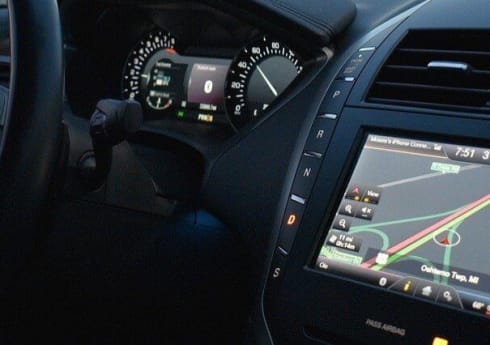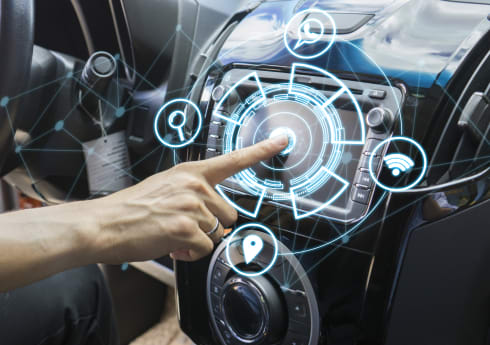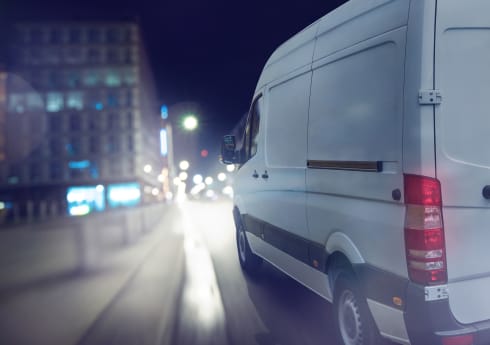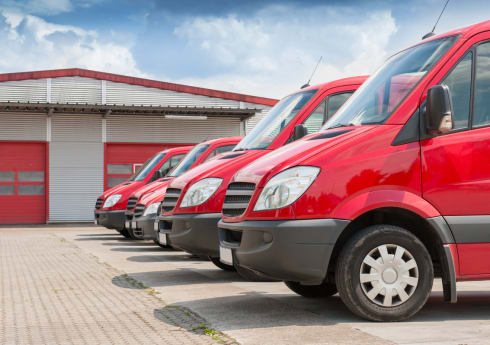All You Need to Know About Driver Camera Systems
Driver camera systems are a handy tool for drivers and fleet managers alike. A driver camera system is much more than a simple dashcam recording video. It’s a valuable solution that can provide evidence and emergency assistance when needed.
Usually, part of a telematics solution, a driver camera system can help you mitigate risks to your fleet and offer you peace of mind. It can also provide driver assistance that could be life-saving in certain situations. Are you ready to install a driver camera system on your vehicles? Here’s all you need to know.
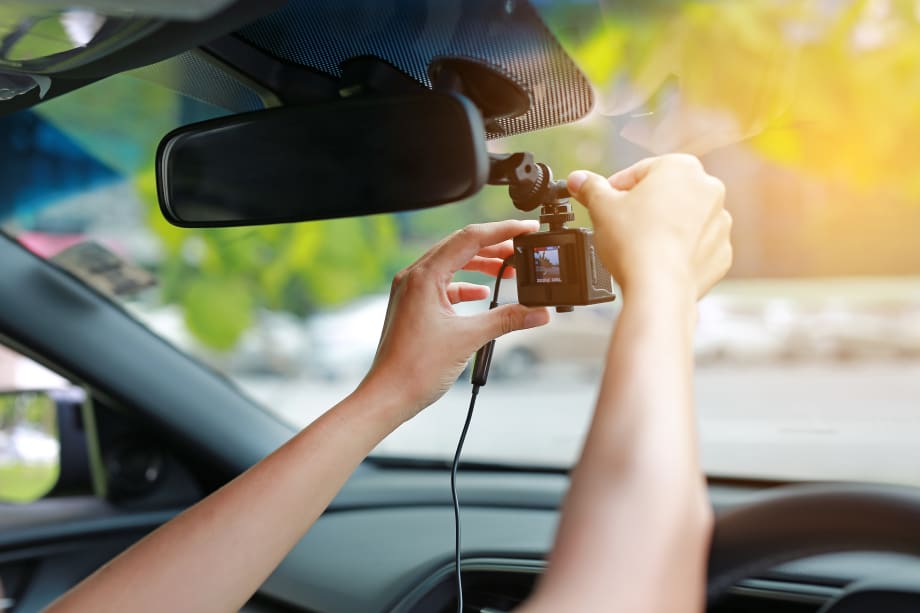
What is a driver camera system?
It’s definitely not just a simple dash cam! A driver camera system is a combination of hardware and software. The piece of equipment is hard-wired to your vehicle to help you increase driver safety and reduce risks. The system can include one or more cameras installed inside or outside the vehicle that work together and are connected to software for better management.
Why are driver camera systems important for businesses?
Whether you’re a sole trader or a fleet manager, safety is a top priority. A good driver camera system may seem expensive at first but that high upfront cost is well worth it. A driver camera system can save you from expensive payouts and accidents in the future. Here’s how a driver camera system can help your business.
1. Insurance
Many insurance providers will offer premium discounts for vehicles that have a driver camera system installed. Why? Because driver camera systems have been proven to reduce risks and increase safety. Now imagine how much you could save if you manage an entire fleet of vehicles.
Because a driver camera system provides undeniable evidence, you can avoid false claims. It is much easier to prove your driver’s innocence when you have video footage of the crash or other accident. That means you get to avoid claims processes and forking out for legal costs.
2. Protection against cargo theft and vandalism
A good driver camera system can include external cameras that can record even when the engine is off.
These cameras are extremely useful to protect your vehicles. Are you a courier working in high-risk areas? Do you manage a fleet of vehicles that need to make a lot of stops, parking in awkward places? These cameras can record any activity around your vehicle and provide invaluable evidence if problems occur. They can capture number plates and faces that will help the police with their investigation.
3. Driver monitoring for increased safety
Many driver camera systems have dual-facing cameras, so that you can also see the driver. This will help you improve the company safety standards among drivers. It will make your drivers more responsible, lowering driver distraction and reducing speeding.
You will be able to give personalised feedback to each of your drivers. A dual-facing camera can also discourage your drivers to use their mobile phones while driving.
The cameras can also provide valuable evidence that your drivers had their eyes on the road and reacted promptly in case of an incident. You’ll be able to quickly prove what really happened in any situation and avoid a possible false claim.
4. Decrease in vehicle maintenance costs
A driver camera system can help you reduce vehicle wear and tear. You can review videos and spot harsh braking and accelerating, tailgating, distracted driving, and other risky behaviour. Or, as part of a telematics solution, some driver camera systems provide full reports with such data.
Based on this data, you can discourage the harsh driving behaviours that lead to vehicle wear and tear. This will save you a lot on maintenance and repair costs.
iCompario tip:
A driver camera system helps to reduce accidents, lower costs, increase driver and vehicle safety. Most of them have useful features like night vision, internet connectivity, HD video quality, or mobile apps for drivers and fleet managers. The best driver camera systems are part of a good telematics system. We can help you find the best telematics solution for your business needs!
Different types of driver camera systems
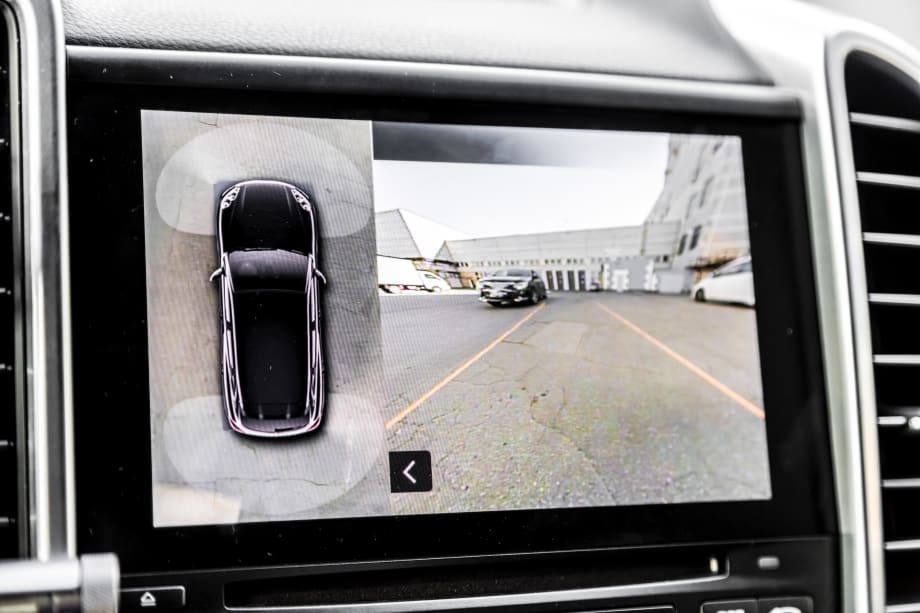
Google “driver camera system” and you’ll get a lot of dashcams meant for personal use. But as fleet manager or sole trader, this is not what you’re looking for. You need something more from your driver camera system. You want something more business-oriented to boost your security and lower your insurance costs.
So, let’s see what types of driver camera systems you can find:
1. Forward-facing
This is the basic type of driver camera system you can find everywhere. It’s mounted on your windshield and faces the road ahead. It’s mainly designed to capture the forward road to provide evidence in case of a collision.
2. Dual-facing camera
This type of driver camera system is very similar to the forward-facing type but has a second camera faced inward to capture the driver and any in-cab activity. This driver camera system is also mounted on the windscreen.
It can be a great tool to help you coach your drivers. It can be extremely useful to exonerate drivers in the case of an accident.
Dual-facing cameras can be ideal for fleets and sole traders to work out a video-based, reliable, driver safety program.
3. Rear view cameras
Reversing cameras are a critical part of a driver camera system. The rear blind spot can be an issue, especially for bigger vehicles. There are a lot of minor collisions happening while reversing.
Install a good driver camera system on your vehicles to avoid collisions and minimise damage!
4. Exterior cameras
These are external cameras usually mounted on the side of your vehicle that will help you eliminate blind spots. And that is a huge advantage for bigger vehicles! Exterior cameras are crucial to increase safety and avoid collisions. They are installed with a screen in the cab for the driver. They work as an alternative to mirrors and can be extremely useful.
Side cameras are also a legal requirement for HGVs in London. The Direct Vision Standard (DVS) is a law designed to cut collisions and injuries in London resulting from HGVs blind spots.
So, if you manage a fleet of HGVs operating in Greater London, you are required by law to have a driver camera system that includes external cameras to obtain a permit.
External driver camera systems and in-cab monitors will make sure your vehicles are not only DVS compliant but less likely to be involved in accidents.
5. CCTV cameras
Part of a good driver camera system, vehicle CCTV cameras record footage both inside and outside a vehicle. The footage is usually back up to cloud, so even if the cameras are removed during a theft, you can still access the footage.
Vehicle CCTV cameras can be extremely valuable, especially if your vehicle transports valuable cargo. Vehicle CCTV cameras can provide irrefutable evidence and be extremely useful in police investigations.
iCompario tip:
A HD camera can give you very clear footage to help identify thieves, track driver behaviour and avoid false claims. But camera quality isn’t the only important factor. Getting the right type for your business needs is more important than how many pixels your camera gives you. A standard camera can get the job done just as well!
How does a driver camera system work with telematics?
As part of a telematics system, dash cameras can be installed in vehicles and record footage from multiple points of view. They are hard-wired to the vehicle. Installing a telematics system has many benefits, not just a reliable driver camera system. Companies that try telematics almost never want to go back to working without it.
The benefits of using telematics do not relate to the size of a company or fleet. They do not always fully correlate to the amount of time vehicles spend driving on the road each day, either. The amount of cash a business can save through using telematics to cut costs will definitely vary depending how much of the functionality it uses. Learn more in our telematics guide for businesses.
Driver camera systems can give you a bird’s eye view of your fleet at all times, making it quick and easy to manage all your drivers. You can deal with breakdowns or accidents immediately and even check the driver dashcam footage or speeding incidents from your mobile phone.
At iCompario we are here to help you find the right system for the right price.
